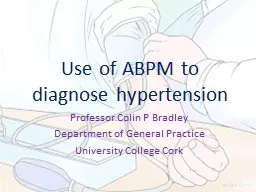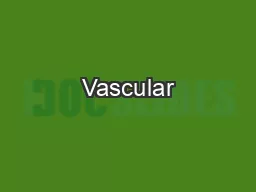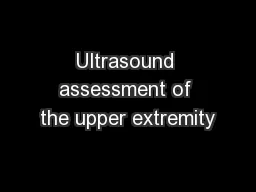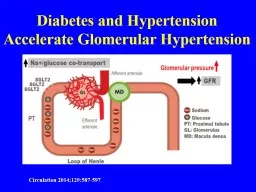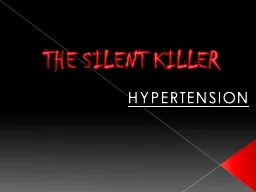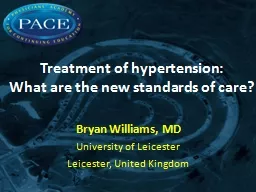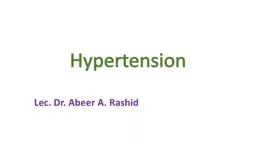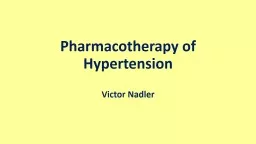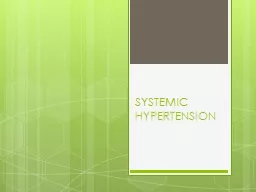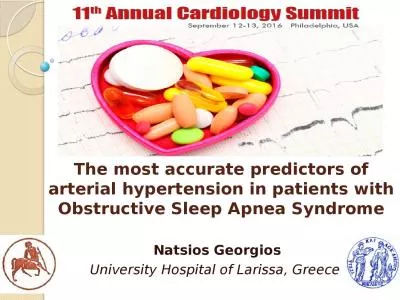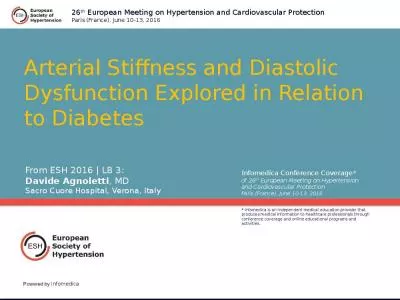PDF-Hypertension is when mean arterial pressure is greater than the upper
Author : evelyn | Published Date : 2022-09-09
active and less fit have a 30 to 50 greater risk for high blood pressure Several recent clinical trials have demonstrated that physical activity reduces blood pressure
Presentation Embed Code
Download Presentation
Download Presentation The PPT/PDF document "Hypertension is when mean arterial press..." is the property of its rightful owner. Permission is granted to download and print the materials on this website for personal, non-commercial use only, and to display it on your personal computer provided you do not modify the materials and that you retain all copyright notices contained in the materials. By downloading content from our website, you accept the terms of this agreement.
Hypertension is when mean arterial pressure is greater than the upper: Transcript
Download Rules Of Document
"Hypertension is when mean arterial pressure is greater than the upper"The content belongs to its owner. You may download and print it for personal use, without modification, and keep all copyright notices. By downloading, you agree to these terms.
Related Documents


